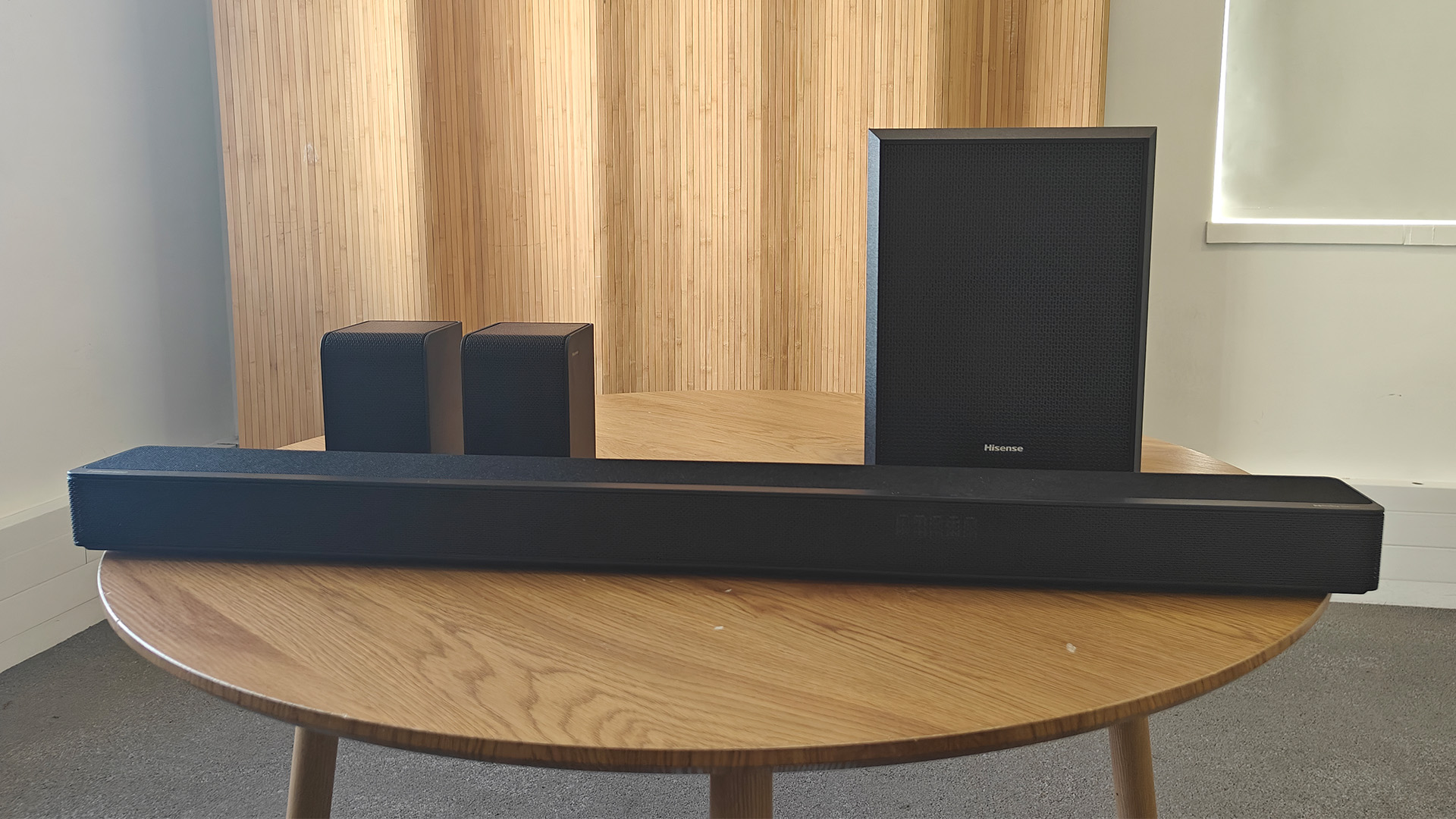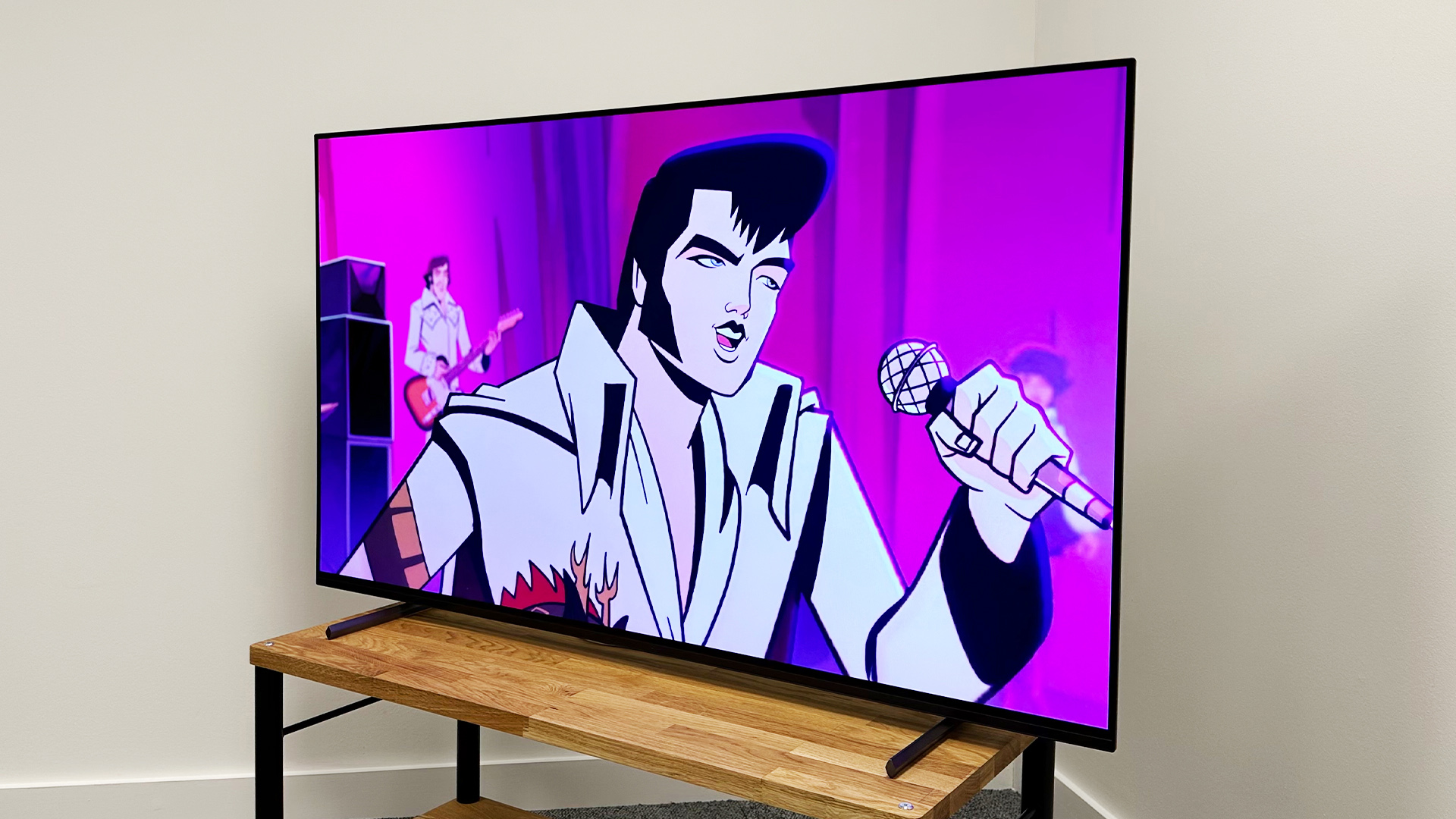What Hi-Fi? Verdict
The fact that you can get this much kit with these specs for this price is really rather impressive – the fact that it actually sounds good is pretty astonishing
Pros
- +
Support for both Dolby Atmos and DTS:X
- +
Amazing weight, scale and spaciousness for the money
- +
Easy set-up and operation
Cons
- -
Occasional slight over-exuberance from the sub
- -
Some minor muffling of voices at times
- -
Less bassy effects slightly lack dynamics
Why you can trust What Hi-Fi?
While one of the perks of being a What Hi-Fi? reviewer is, of course, getting access to super-premium products well beyond the means of many, few things put smiles on our faces like unearthing a brilliant budget gem.
And that’s what we have before us today.
The Hisense AX5125H is a complete Dolby Atmos (and DTS:X) system in a box that costs less than most solo soundbars, and it sounds so much better than it has any right to at its price – and than we were expecting.
Price
The Hisense AX5125H currently costs £249 / $350 (around AU$500), which is frankly ridiculous value for what it is.
For reference, the Sonos Beam Gen 2 is occasionally available for around £349 / $399 / AU$700 and is just a soundbar, whereas the Hisense package includes a soundbar, a wireless subwoofer and two wireless surrounds.
There really is nothing else we’ve reviewed that offers so much for so little. Perhaps that’s why our expectations were so low.
Design
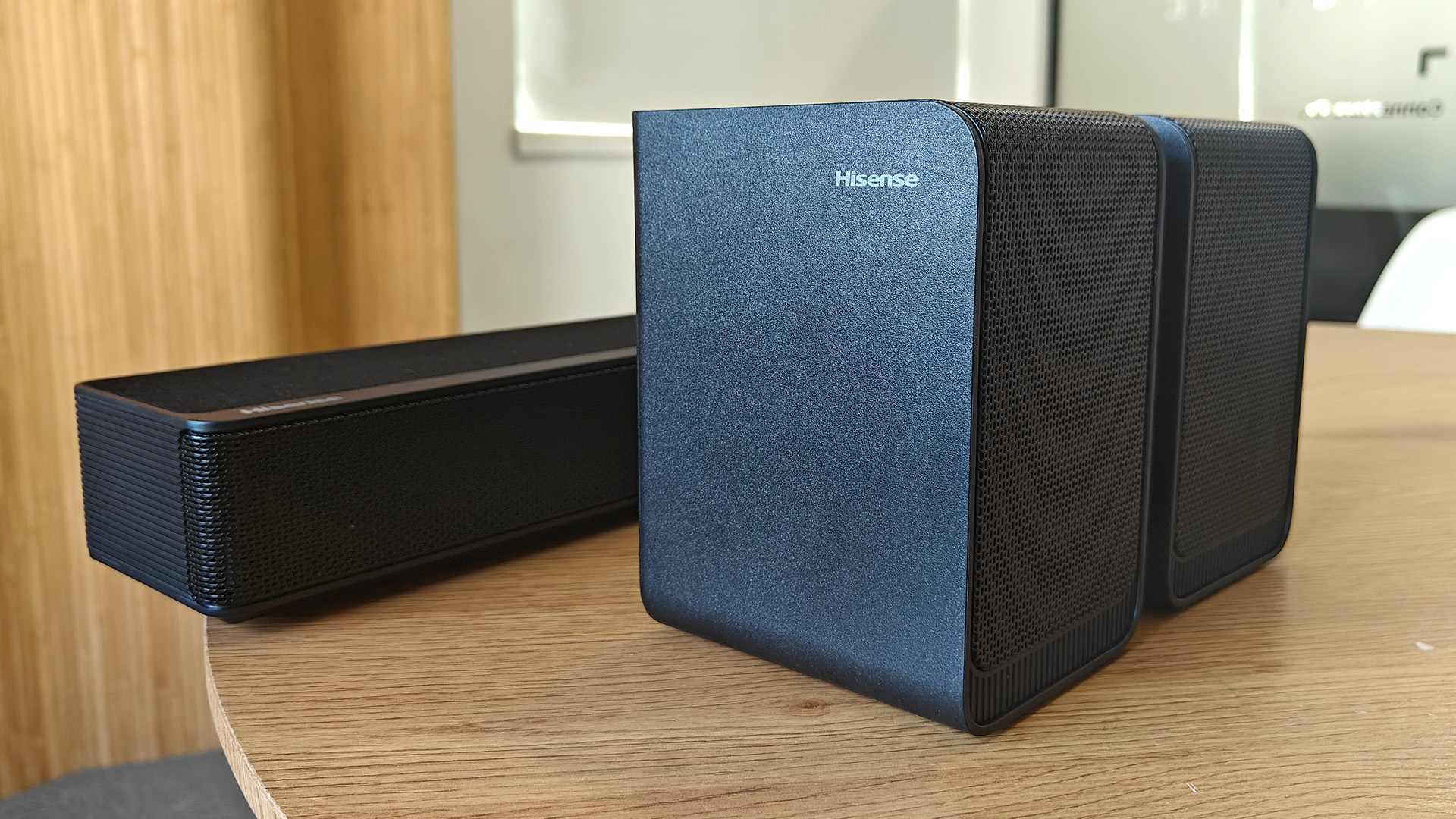
All of the components in the Hisense system have a slightly dull, functional look to them, but nothing appears or feels cheap. On the contrary, the soundbar in particular feels solid and well put together.
The latest hi-fi, home cinema and tech news, reviews, buying advice and deals, direct to your inbox.
The soundbar’s dimensions are sensible, too: at 6 x 92 x 9cm (height x width x depth) it’s compact enough to sit on most furniture and in front of most TVs without blocking its display, but not so small as to look insubstantial.
The surrounds are less confidence-inspiring, as they’re very dinky indeed. This of course makes for easy placement (as with the soundbar itself, there are integrated keyhole fixings for wall mounting, if that’s the route you want to go down), but tiny speakers rarely make a big sound. Aren’t these going to sound really thin and tinny?
The subwoofer is also fairly compact by the standards of its brethren, but less alarmingly so. The dimensions (29 x 21 x 30cm) make it very easy to find a nook for the sub, though we recommend giving it a little space, preferably quite close to the soundbar itself, for maximum effectiveness.
While many soundbars have no display at all, the Hisense AX5125H has a simple dot-matrix number that delivers information such as the input, sound preset and surround mode selected, as well as volume level. It isn’t fancy, but it is fairly clear and effective. It can also be dimmed or turned off entirely via a button on the remote.
Said remote is fairly basic and plasticky, as you would probably expect, but it does the job well enough. Many owners will rarely, if ever, touch it anyway, as their TV’s remote will handle changes in volume as long as it's connected via HDMI eARC/ARC.
Features and specs
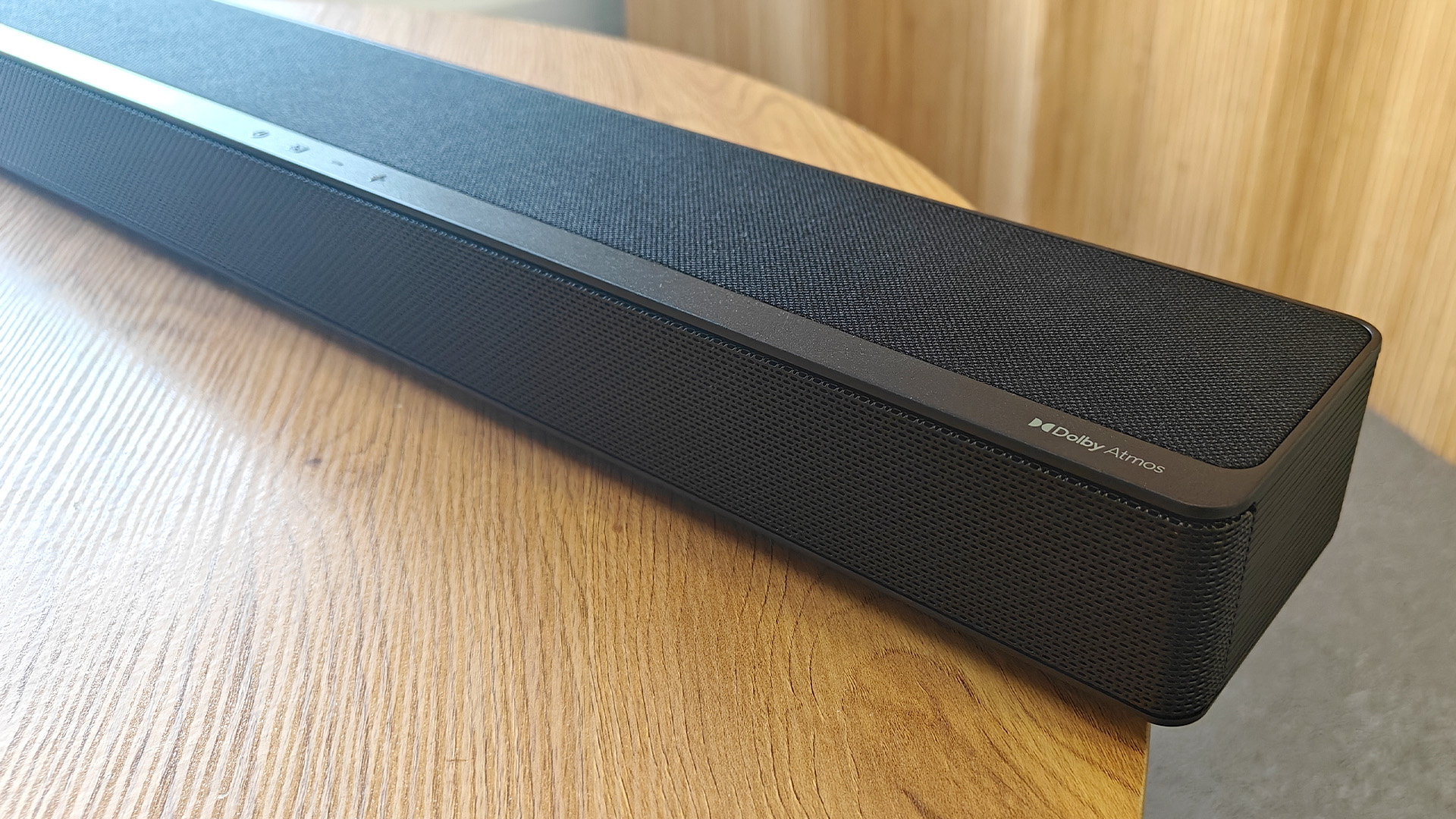
While many owners will simply connect their TV to the Hisense AX5125H via HDMI eARC/ARC and be done with it, those with external sources (particularly those with lots of them) will be pleased to see that the soundbar also has a dedicated HDMI input. Passthrough is limited to 60Hz, so there’s no support for 4K/120Hz gaming signals, but any passthrough functionality at this level is a bonus.
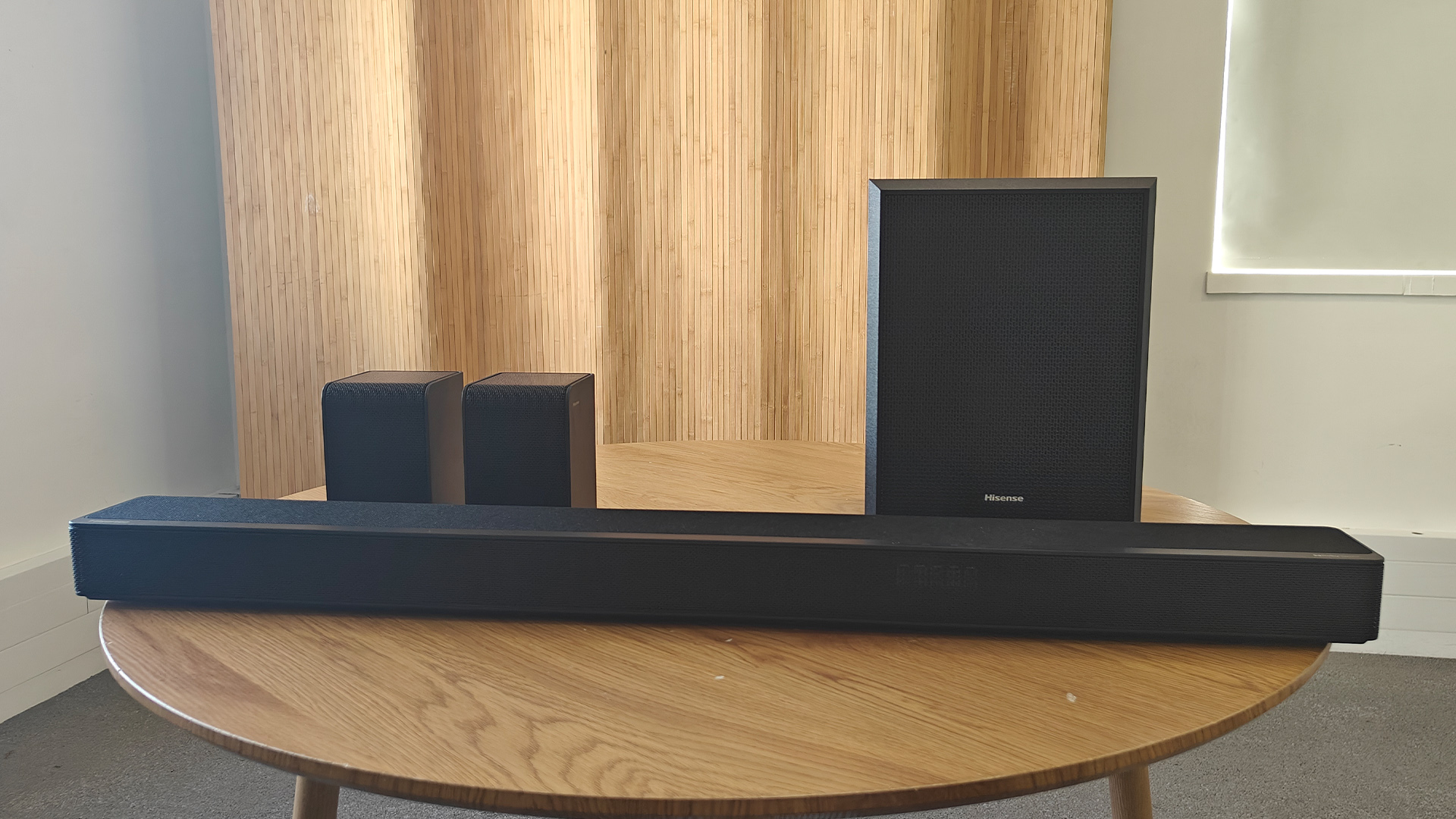
Connectivity HDMI eARC, HDMI-in, Optical, Bluetooth
Format support Dolby Atmos, DTS:X
Streaming? No
Voice control? No
Dimensions (hwd) 6 x 92 x 9cm (soundbar) / 29 x 21 x 30cm (subwoofer) / 14 x 9 x 11cm (each surround)
Should you have an older TV or some other audio equipment to connect, there’s also an optical input, and Bluetooth is on board for music.
Hisense rates the total power output at 500W, split across 5.1.2 channels. That’s three front-firing channels and a driver in each surround for the ‘5’, one big driver in the sub for the ‘1’, and two up-firing drivers in the soundbar for the ‘2’.
There are several audio presets to choose from, with the system defaulting to the AI setting. You can trust this to choose the right profile for different sources if you really want, but we prefer to take the guesswork out of things and, after much testing, settle on Movies for movies and TV shows, and Music for Music.
Game, News and Sport have little value (just stick with Movie for these content types), but the Night mode will likely prove useful at times, as it suppresses bass and dynamic range to reduce disruption to those in the house who might not want to hear what you’re listening to.
There are also two surround modes, Pure Surround and Surround Pro. The differences between these are, disappointingly, not outlined in the manual, but Surround Pro sounds the bigger and weightier of the two, while Pure Surround is cleaner, clearer and more direct. It’s the latter we choose.
Sound quality
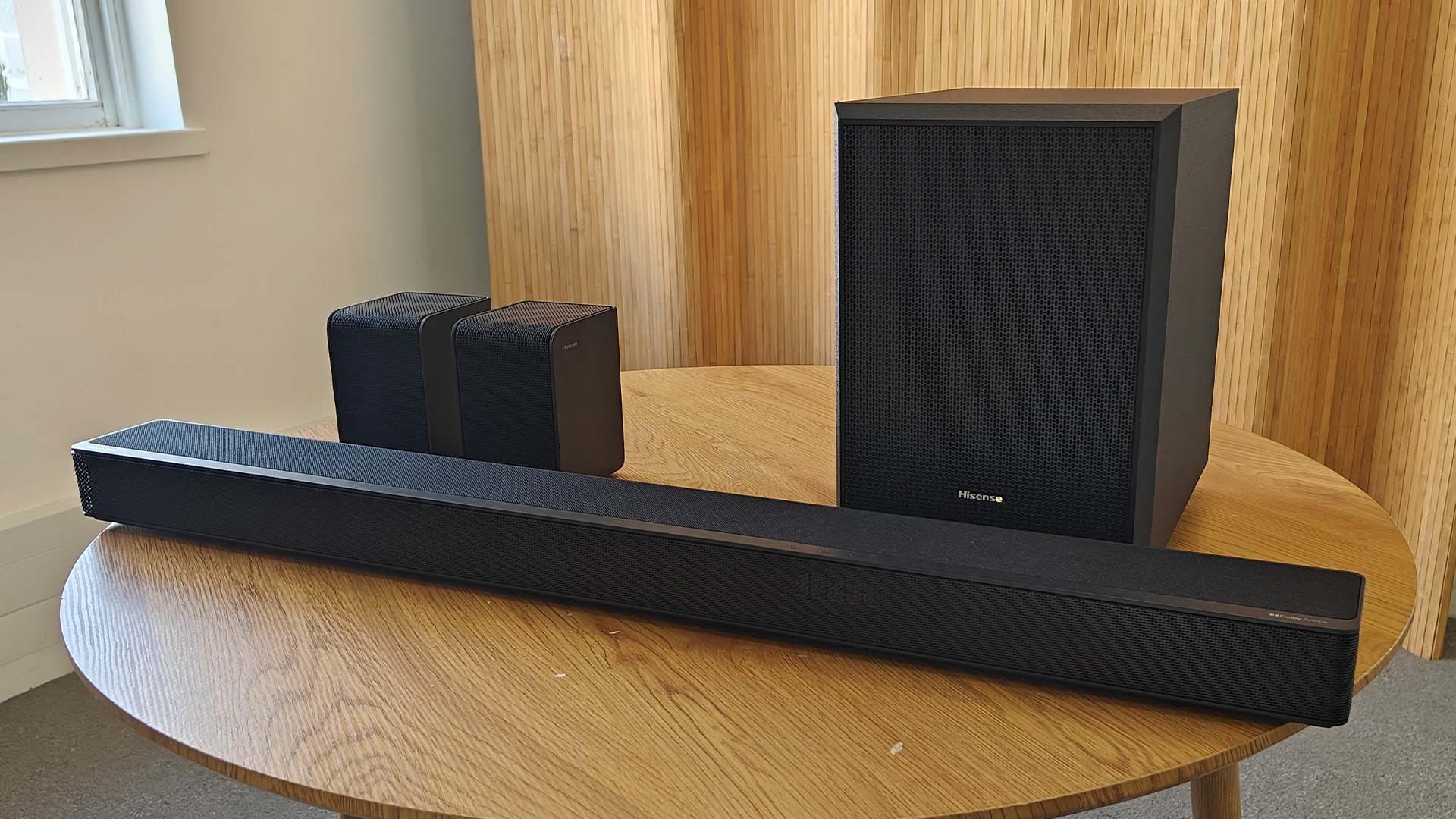
We didn’t have particularly high hopes for the AX5125H’s sound, largely because of its price, but also because of those dinky surround speakers. Surely they wouldn’t be able to deliver convincing surround effects.
But as soon as we get the system running in earnest, using the fight for Washington, DC from Civil War as our first real tester, we’re struck by how cohesive and enveloping the presentation is.
As the gentle guitar track recedes and is replaced by the sounds of war, we’re surrounded by gunfire and incidental effects. Bullets whizz from the front to the back of the room and even behind the listening position, helicopters hover at ceiling height, and distant explosions rumble menacingly.
The subwoofer is really rather impressive, given the system cost. It’s capable of going very loud and very deep, and while it of course lacks the sophistication of a good, standalone sub, it’s not the woolly, monotonal blunt instrument that one would expect at this level.
Instead, explosions and deep gunfire have good impact and solidity, and there’s just about enough tonal expression for bassy soundtrack elements to sound reasonably musical.
That said, there are frequencies at which the sub gets a little too excited, and it delivers a big thump that rather sticks out. The bass in the soundtrack as Batman approaches the thugs in the subway tunnel in The Batman is a great example, with one recurring note being reproduced much louder than the others.
It’s also clear that the system relies heavily on the subwoofer for dynamics, which means that less weighty effects can sound a little flat. You can lessen this by keeping the bass volume to somewhere between about 0 and +2, and then increasing the overall volume. You won’t rob the system of its weight, but you will get greater balance, particularly in loud sections of soundtrack.
While you’re at it, we recommend keeping the treble level around the 0 mark. Increasing it adds a little more zing to some effects, but it also adds sibilance to voices.
Keep the treble in check, and voices sound natural and pretty emotive, with the system having just enough low-level dynamic ability to reveal the nuance in an actor’s performance. The dialogue also remains clear in the vast majority of situations, with only the busiest, bassiest sections causing them to become a touch muffled.
We switch to Dune 2, and as a swarm of Ornithopters takes to the air, the Atmos effect is really well delivered. While the lack of up-firing drivers in the surround speakers means this isn’t quite a full dome of sound, the height effects appear quite deep into the room and the overall delivery is brilliantly enveloping.
A system with up-firers at all points should be even more impressive here, but such a system will cost significantly more.
While the AX5125H punches well above its weight with movies, it’s a more qualified success with music. The surround modes are surprisingly not horrible with stereo music, but there’s still an inauthentic aspect to their delivery, so turning them off is still advised.
The soundbar has a good crack at Tool’s Invincible, gamely driving the frantic percussion and even delivering some of the subtle warble in Maynard James Keenan’s vocals. But even at its lowest volume level, the subwoofer can’t resist interjecting slightly rudely at times and adding bass notes that stick out awkwardly.
This isn’t a horrible musical delivery by any means, but it’s not a patch on the Hisense’s performance with movies.
Verdict
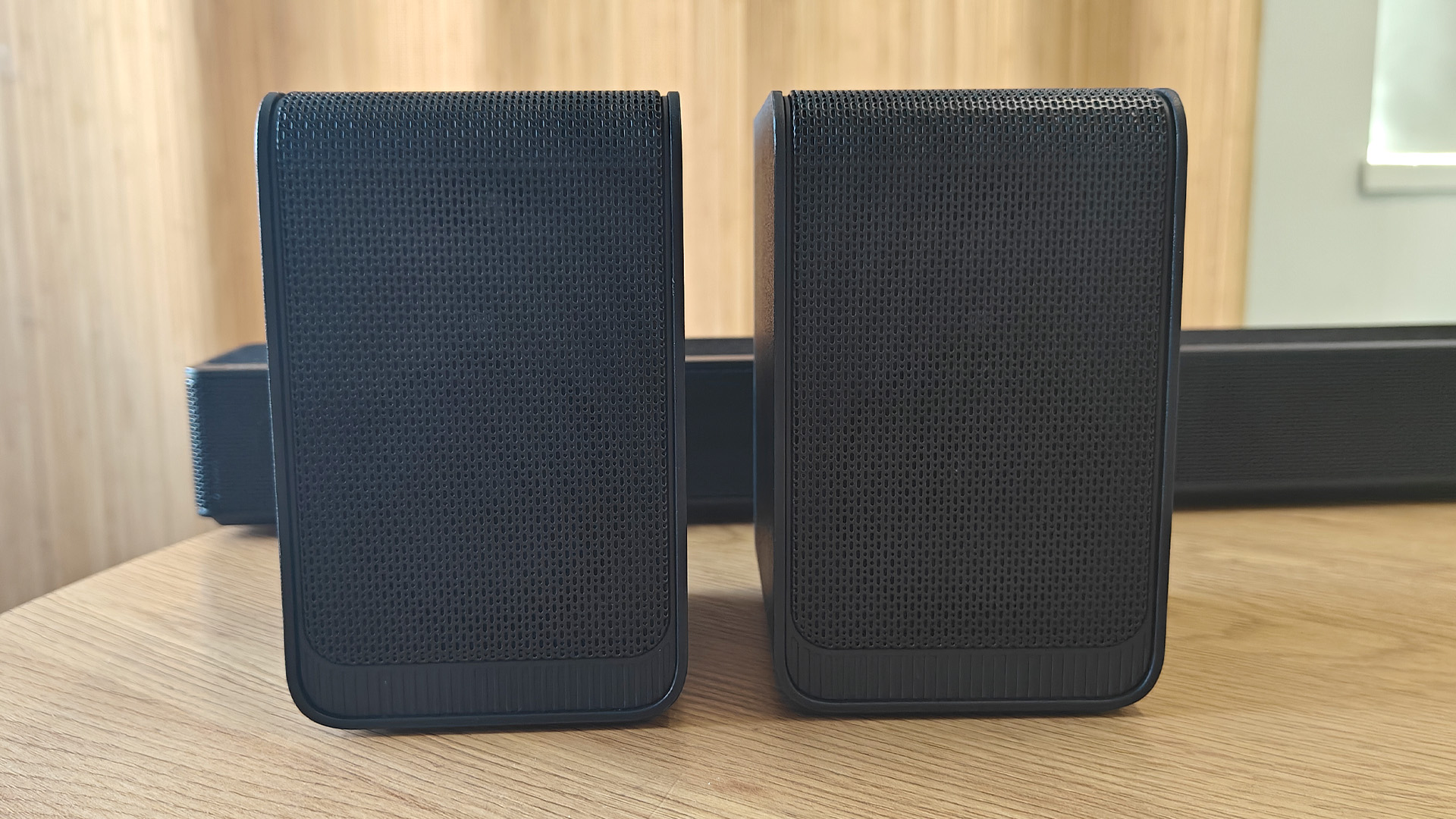
The Hisense AX5125H caught us completely off guard. Most solo soundbars that cost this sort of money are seriously deficient in terms of audio quality, so surely sound must have been compromised even further for Hisense to have delivered a complete system with these specs.
That’s simply not the case, though. This remarkably affordable system delivers Dolby Atmos and DTS:X soundtracks with room-filling, sofa-shaking exuberance, and while it of course has its limitations, it’s a vast upgrade on the sound of any TV we’ve tested.
If you thought convincing, exciting Dolby Atmos sound was out of your budget, it’s time to think again.
SCORES
- Sound 5
- Design 4
- Features 5
MORE:
Check out our reviews of the Sonos Bean Gen 2 and Samsung HW-Q990F
Here are all of the best soundbars and best budget soundbars you can buy right now
Tom Parsons has been writing about TV, AV and hi-fi products (not to mention plenty of other 'gadgets' and even cars) for over 15 years. He began his career as What Hi-Fi?'s Staff Writer and is now the TV and AV Editor. In between, he worked as Reviews Editor and then Deputy Editor at Stuff, and over the years has had his work featured in publications such as T3, The Telegraph and Louder. He's also appeared on BBC News, BBC World Service, BBC Radio 4 and Sky Swipe. In his spare time Tom is a runner and gamer.
You must confirm your public display name before commenting
Please logout and then login again, you will then be prompted to enter your display name.
